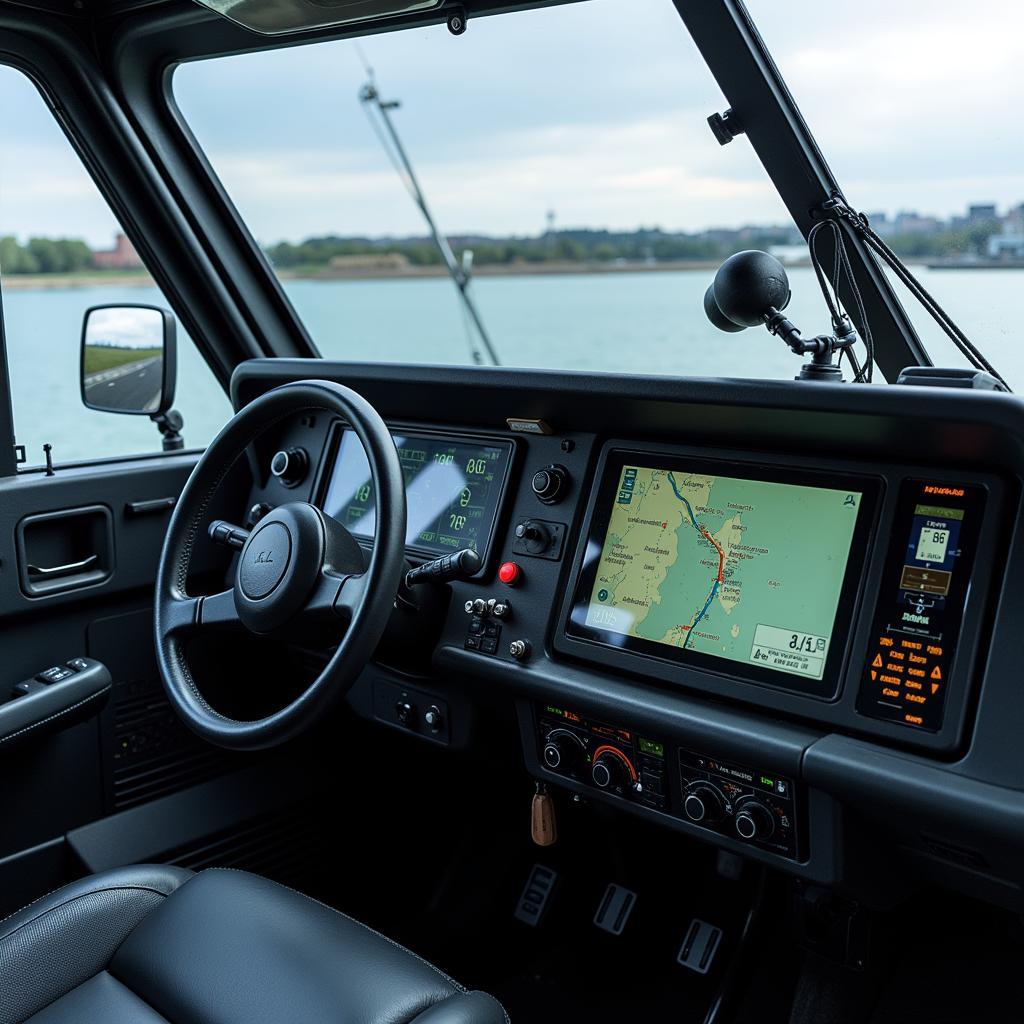The diverse landscapes and extensive waterways of Southeast Asia present unique challenges for transportation and defense. ASEAN amphibious vehicles play a crucial role in addressing these challenges, offering versatile solutions for everything from disaster relief to military operations. These vehicles, capable of traversing both land and water, are becoming increasingly important in the ASEAN region.
ASEAN Amphibious Vehicles: A Growing Need
ASEAN nations are increasingly recognizing the strategic importance of amphibious vehicles. With archipelagos, extensive coastlines, and frequent flooding, the ability to seamlessly transition between land and water is invaluable. This demand has led to a surge in the development and acquisition of these vehicles within the region. From search and rescue operations to patrolling territorial waters, ASEAN amphibious vehicles are proving their worth.
Diverse Applications of Amphibious Vehicles in Southeast Asia
The applications of these versatile vehicles are incredibly diverse. In times of natural disasters, such as floods and tsunamis, amphibious vehicles provide essential access to affected areas, delivering aid and evacuating those in need. Their ability to navigate flooded terrain makes them a lifeline for communities cut off from traditional transportation routes. Furthermore, they contribute significantly to maritime security, patrolling coastlines, combating piracy, and protecting valuable marine resources.
Beyond disaster relief and security, ASEAN amphibious vehicles also play a role in tourism and transportation. They offer unique sightseeing opportunities, allowing tourists to explore remote islands and waterways. In areas with limited infrastructure, they can also serve as a vital link between communities, transporting goods and people across rivers and lakes.
The Future of ASEAN Amphibious Technology
ASEAN nations are actively investing in the development and modernization of their amphibious capabilities. This includes not only acquiring new vehicles but also upgrading existing fleets with advanced technologies. The focus is on enhancing speed, maneuverability, and payload capacity, while also incorporating sustainable and environmentally friendly features.
Advancements in Amphibious Vehicle Design
Modern amphibious vehicles are increasingly sophisticated, incorporating cutting-edge technology to optimize performance in both land and water environments. Advanced propulsion systems, improved hull designs, and integrated communication systems are just a few examples of the ongoing advancements. These improvements enable faster response times, greater operational flexibility, and enhanced situational awareness.
 Modern ASEAN Amphibious Vehicle Technology
Modern ASEAN Amphibious Vehicle Technology
ASEAN Collaboration in Amphibious Vehicle Development
Collaboration among ASEAN member states is crucial for maximizing the potential of amphibious technology. Sharing knowledge, expertise, and resources can accelerate development, improve interoperability, and reduce costs. Joint training exercises and information exchange further strengthen regional cooperation in this critical area.
“Investing in amphibious capabilities is not just about acquiring hardware; it’s about building resilience and enhancing regional security,” states Dr. Anisa Rahman, a leading expert in maritime security at the Institute of Strategic and International Studies in Jakarta. “By working together, ASEAN nations can effectively address shared challenges and safeguard their collective interests.”
ASEAN Amphibious Vehicles: Enhancing Regional Security
The strategic significance of ASEAN amphibious vehicles extends beyond national borders. They contribute to regional stability by enhancing maritime security, promoting interoperability among ASEAN forces, and facilitating humanitarian assistance and disaster relief efforts. This collaborative approach strengthens the region’s ability to respond to shared challenges.
The Role of Amphibious Vehicles in Humanitarian Assistance
Amphibious vehicles are indispensable in humanitarian assistance and disaster relief operations. Their ability to reach areas inaccessible by conventional means is critical in delivering aid, evacuating casualties, and providing medical assistance. In the aftermath of natural disasters, these vehicles can be the difference between life and death.
 ASEAN Amphibious Rescue Mission
ASEAN Amphibious Rescue Mission
“The unique capabilities of amphibious vehicles allow us to reach communities in dire need, providing a lifeline of support and hope during times of crisis,” explains Captain Chandra Wijaya, a veteran of numerous humanitarian missions in the region. “These vehicles are not just tools; they are symbols of our commitment to helping our neighbors in times of need.”
In conclusion, ASEAN amphibious vehicles are essential assets for the region. They contribute significantly to disaster relief, maritime security, transportation, and even tourism. The ongoing development and modernization of these vehicles, coupled with regional collaboration, are crucial for ensuring the safety, security, and prosperity of Southeast Asia. The future of ASEAN amphibious technology is promising, with continued innovation and investment driving further advancements in this vital field.
FAQ
- What are the primary uses of ASEAN amphibious vehicles?
- How do these vehicles contribute to disaster relief efforts?
- What are the advantages of modern amphibious vehicle technology?
- How is ASEAN collaborating on amphibious vehicle development?
- What is the role of these vehicles in enhancing regional security?
- How do amphibious vehicles support humanitarian assistance operations?
- What are the future prospects for ASEAN amphibious technology?
Need More Information?
Check out these related articles on our website:
- Maritime Security Challenges in Southeast Asia
- The Role of Technology in Disaster Relief
- ASEAN Cooperation in Defense and Security
Need support? Contact us 24/7: Phone: 0369020373, Email: aseanmediadirectory@gmail.com, or visit us at: Thôn Ngọc Liễn, Hiệp Hòa, Bắc Giang, Việt Nam.

